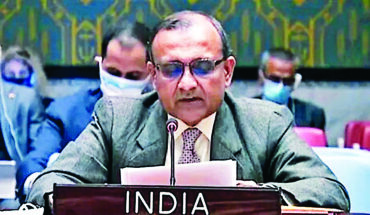Faizan Mustafa believes public confidence in judiciary is strengthened by orders & judgments
Lawyer and social activist Prashant Bhushan’s conviction with god speed for contempt of court has revived the debate on the relevance of contempt law in a modern liberal democracy. The Supreme Court of India has said that his tweets, two of them, have undermined the dignity and the authority of the most powerful court and have the effect of destabilising the very foundation of Indian democracy. This controversial judgment may be technically and legally correct but has it enhanced the stature of the Court? Is it right to punish critics of the judiciary in the name of the people? Should civil contempt be given more importance? And what reforms should be introduced in criminal contempt?
The primary justification of contempt power has been people’s opinions. In the judgment, the word ‘people’ occurs 27 times. Consider this. On June 27, 2017, there were huge protests against mob lynching under the campaign, ‘Not in my name’ in response to film-maker Saba Diwan’s social media call. Today, there are people who are opposed to invoking people’s name to justify contempt law.
The judgment tells us repeatedly that the object of contempt proceedings is not to afford protection to judges personally from the imputations. Instead, it is to protect people at large and to uphold the rule of law as distrust in the popular mind does impair the confidence of people in courts as such confidence is of huge importance for the protection of the rights and liberties of people. In paragraph 48 of the judgment, the three-judge Bench explicitly observes that ‘when the court exercises this power, it does not do so to vindicate the dignity and honour of the individual judge who is personally attacked or scandalised but to uphold the majesty of the law and of the administration of justice.’ The Bench goes on to say that ‘the foundation of the judiciary is the trust and the confidence of the people’.
Strangely, in paragraph 71, the Bench has proclaimed itself to be the ‘central pillar’ of democracy but has rightly said that the ‘trust, faith and confidence of the citizens of the country in the judicial system is sine qua non for the existence of rule of law’. This confidence is indeed strengthened not by the resort to contempt powers but by the Court’s orders and judgments. Res ipsa loquitur is the old maxim, i.e. the thing speaks for itself. People have observed with an element of frustration not only the Court’s reluctance in promptly hearing habeas corpus petitions, the CAA and 370 petitions, but also the Court’s initial observations on the plight of millions of poor migrant workers and stay of payment of wages order. In an election year, the Court did not consider it urgent enough to examine the validity of controversial electoral bonds but had time for an open court hearing in a review in 2019 of Sabarimala. Though no error in the judgment was pointed out, the review was still accepted. The innovative ‘sealed cover’ jurisprudence and the Court’s over-indulgence in Assam’s National Register of Citizens and then not saying a thing on its completion raised many an eyebrow. There were even four sitting judges of the top court who, on January 12, 2018, held an unprecedented press conference on a working day to ‘discharge their debt to nation’ as democracy, in their view, was under threat with the ‘credibility of [the] court at stake’.
This is what worries many independent observers of our judiciary that the courts, of late, have been behaving more like the executive courts of erstwhile socialist countries. The only major assertion of judicial independence in the recent past (other than the quashing of President’s Rule in Arunachal Pradesh) was the National Judicial Appointments Commission judgment (2015) where the Court struck down the constitutional amendment and the NJAC Act, 2014. This writer does believe that the independence of the judiciary is indeed the right of people and not of judges. But then the fact remains that the top court in fact demonstrated its real mettle in basically asserting the collegium’s power to select judges. Then why has the Court not shown similar resolve in upholding people’s liberties? The High Courts in the meanwhile, just like in the 1975 Emergency, are widely applauded for passing some good orders though some of these orders eventually got stayed by the Supreme Court.
Indian judges make excessive use of contempt powers. As in the Indian Judiciary Report (2016-17) published by the Supreme Court, High Courts had 96,310 civil contempt cases, i.e. wilful disobedience of court judgments and orders on June 30, 2017. Thus, civil contempt is far more serious generally committed by the government than so-called ‘scandalising of court’ by mere statement. Even the number of criminal contempt cases is also quite impressive with 586 cases. In A.K. Gopalan (1950), the majority took the positivistic view of Article 21 and expressed their helplessness as preventive detention law satisfied the requirement of ‘procedure established by law’. In ADM Jabalpur (1976), a majority, like in the Prashant Bhushan case, took the highly legalistic view and held that since Article 21 is under suspension due to Emergency, the writ of habeas corpus cannot be claimed. Subsequent decades proved that in both the cases, majority decisions did disservice to the Court’s reputation and it were dissenting judges such as Justice Fazl Ali and Justice H.R. Khanna who had really enhanced people’s faith in the judiciary. The Court itself overruled these two judgments in Maneka Gandhi(1978) and K.S. Puttaswamy (2018).
In all contempt judgments, the Court has been using its powers in the name of the people and Justice Arun Mishra’s Bench merely relied on them. It cited the Brahma Prakash Sharma (1953) judgment, wherein the Supreme Court had justified contempt powers by observing that ‘it is intended to be a protection to the public whose interests would be very much affected if by the act or conduct of any party, the authority of the court is lowered and the sense of confidence which people have in the administration of justice by it is weakened’, and that contempt powers are to be invoked to restore this confidence. The top court had further elaborated that ‘such conduct is punished as contempt for this reason that it tends to create distrust in the popular mind and impair the confidence of the people in the courts which are of prime importance to the litigants in the protection of their rights and liberties’. Similarly, in Hira Lal Dixit (1955), the top court again referred to the ‘confidence of the people in the integrity of the judges’.
Just like the Supreme Court’s judgment on sedition in Kedar Nath Singh (1962), a mere scurrilous attack against the courts/judges should not be punished if it does not lead to an actual obstruction of the judicial process. In Shiv Shankar (1988) and Rachapudi Subba Rao (2004), the Supreme Court itself had held that criticism of the court that does not impair and hamper the administration of justice cannot be punished as contempt. Ideally, the Bench should have given little more weightage to Justice Krishna Iyer’s observation that ‘the court is willing to ignore, by a majestic liberalism, trifling and venial offences — the dog may bark, the caravan will pass.’
Faizan Mustafa is Vice-Chancellor of
NALSAR University of Law, Hyderabad.
Views expressed are his own






